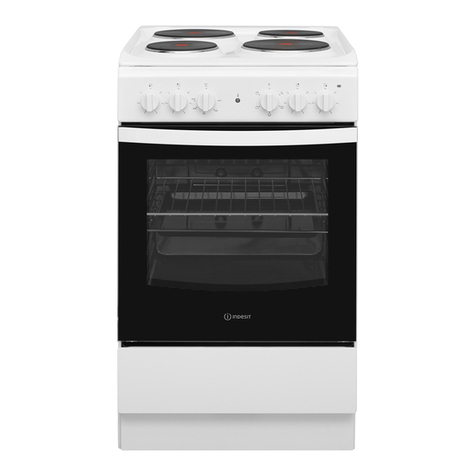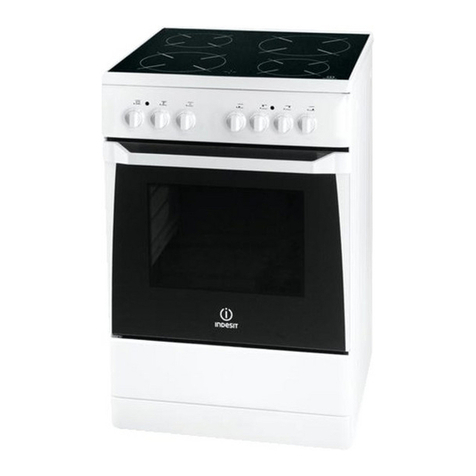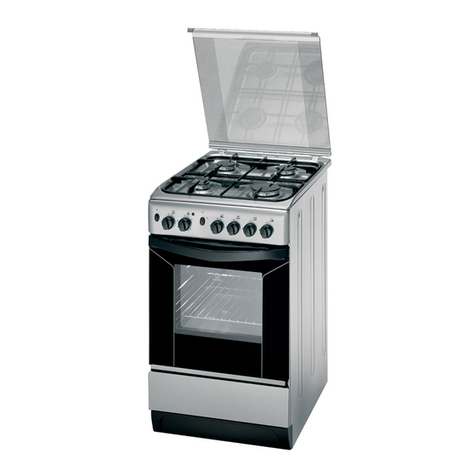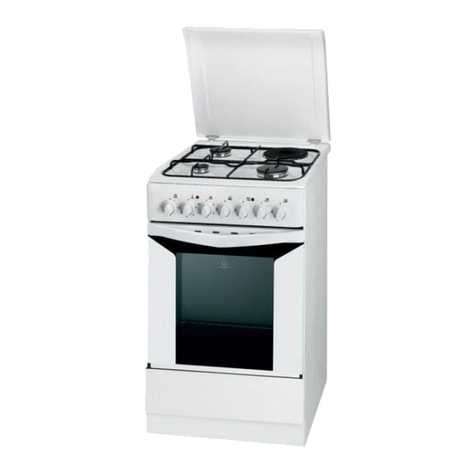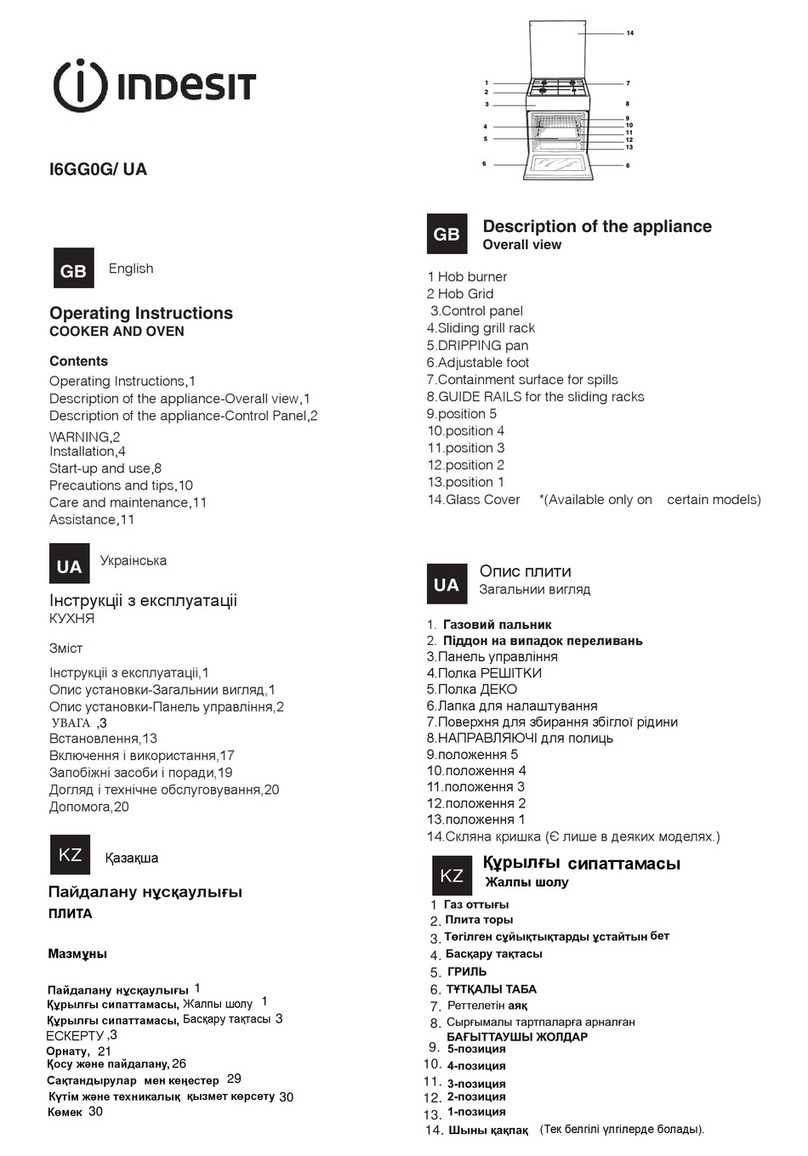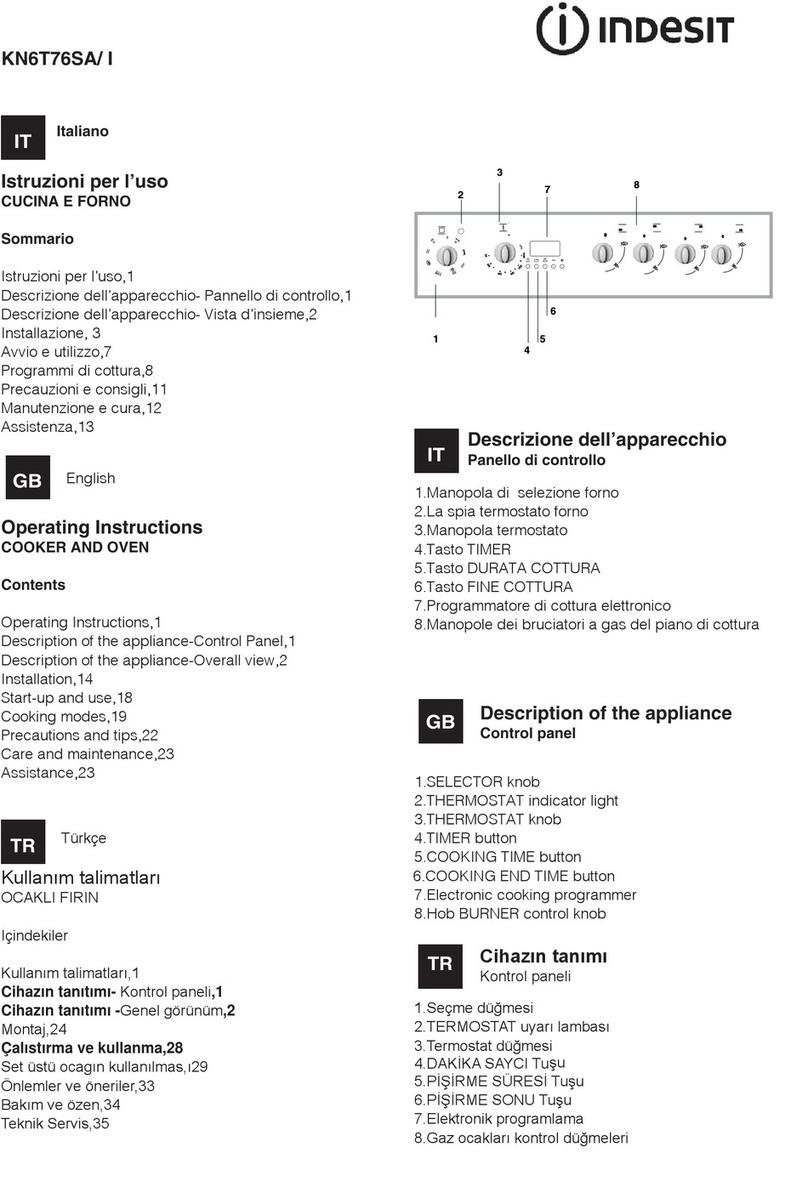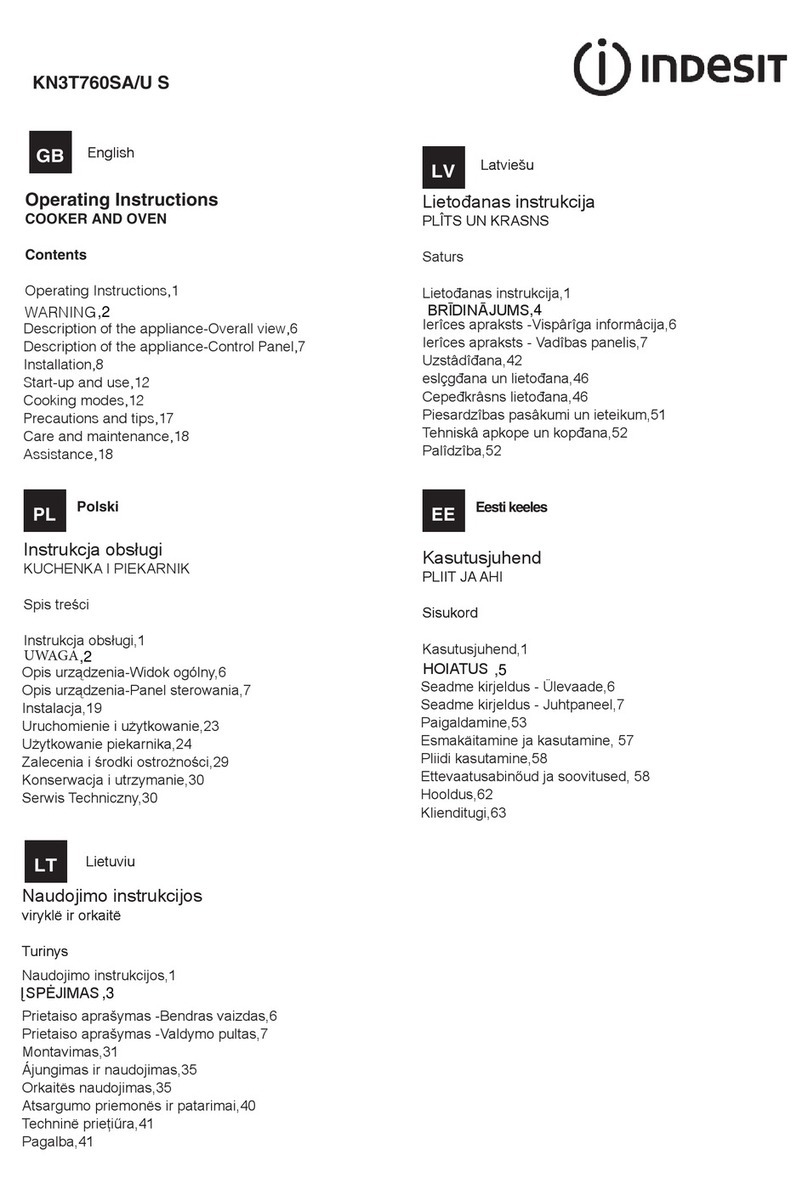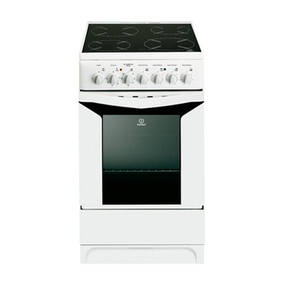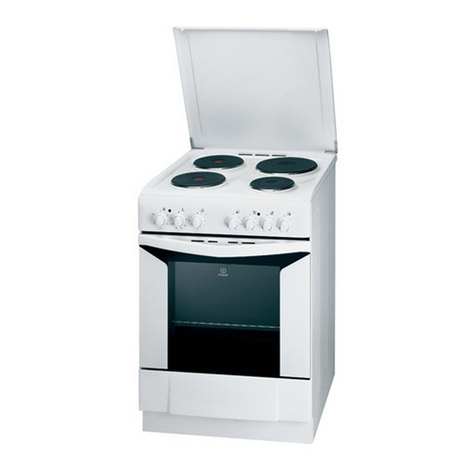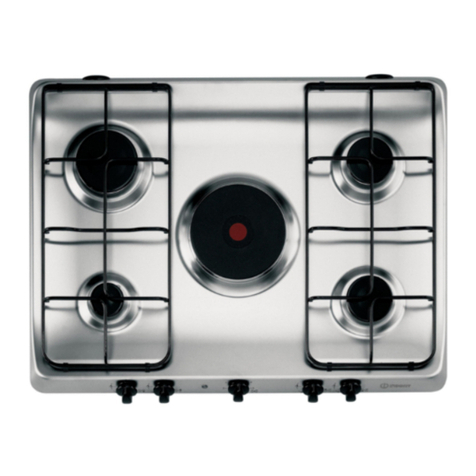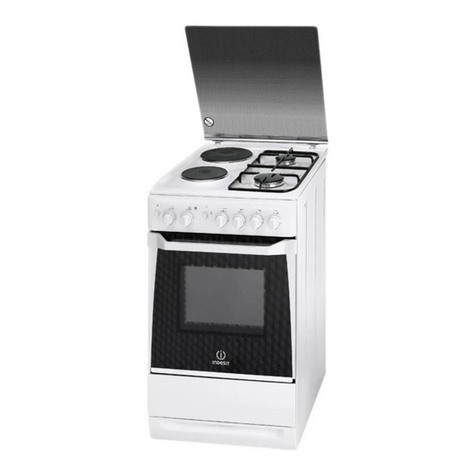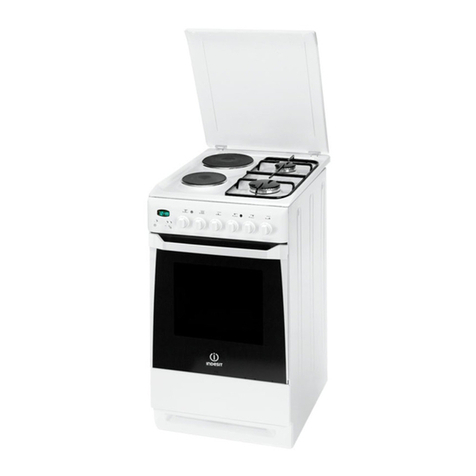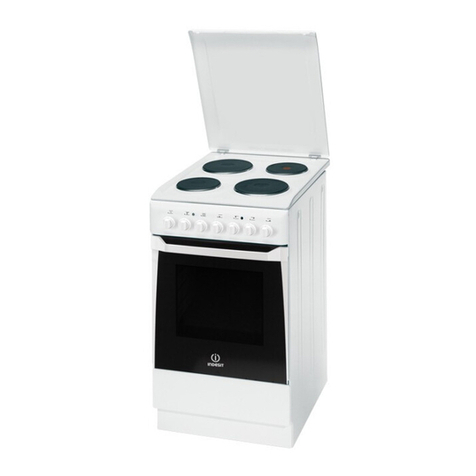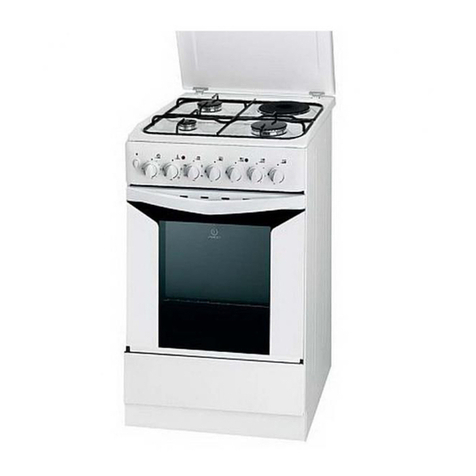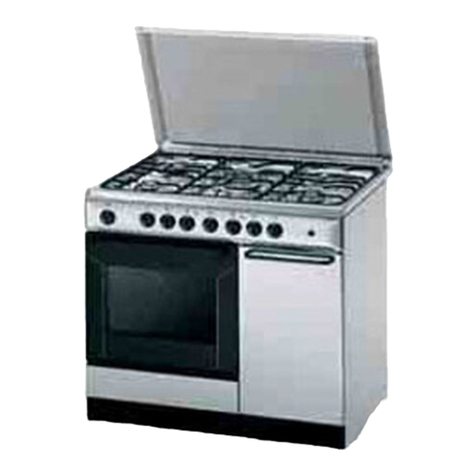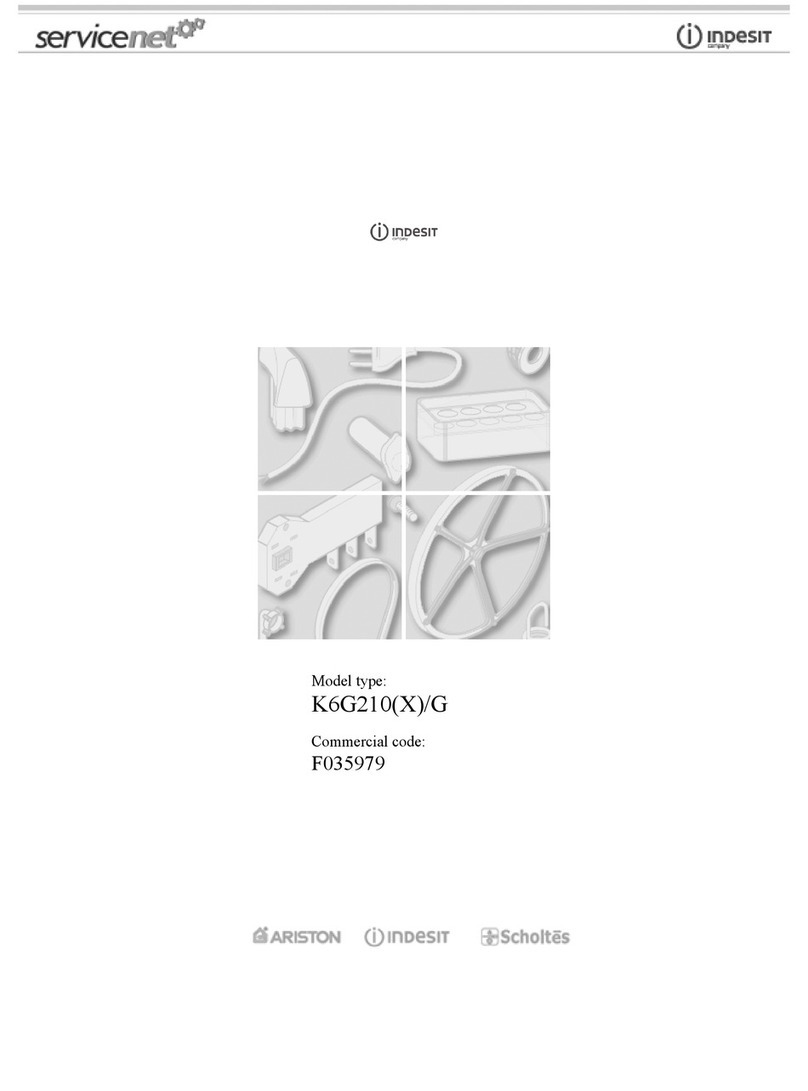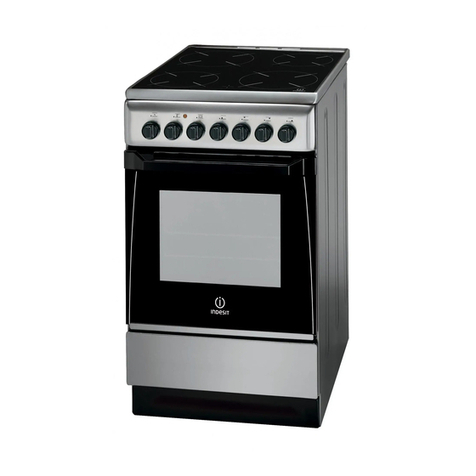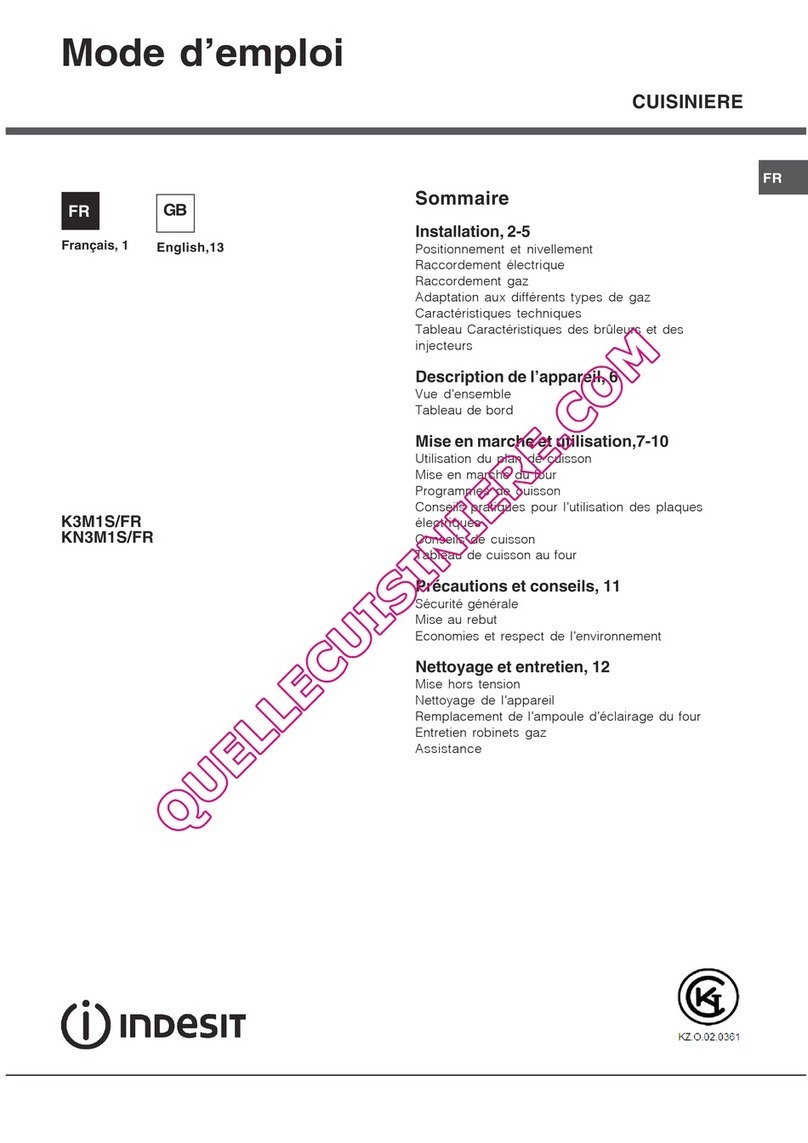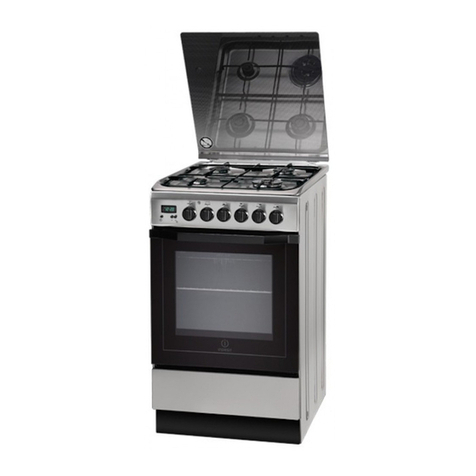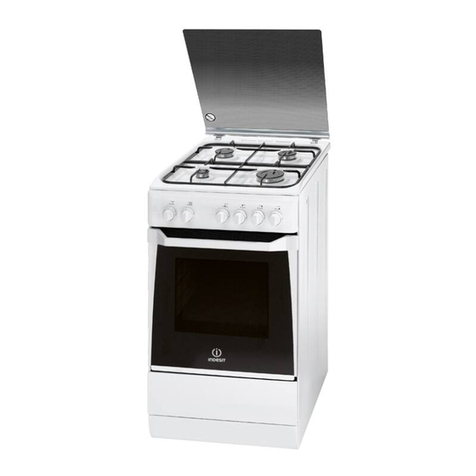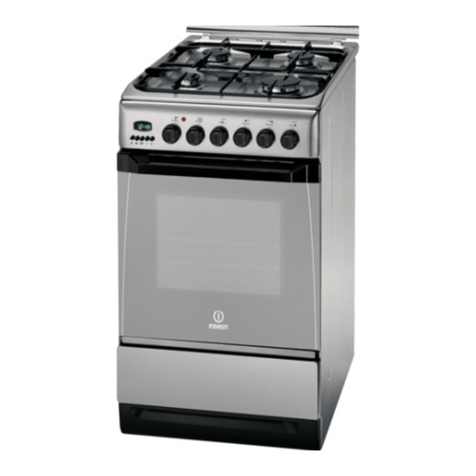10
HowTo UseYour Appliance
The various features of cooker are controlled through the
knobs and buttons located on the control panel.
Control Knobs for the Gas Burners on the Hob (N)
The position of the gas burner controlled by each one of the
knobs is shown by a solid ring •. To light oneof the burners,
hold a lighted match or lighter near the burner and, at the
same time, press down and turn the corresponding knob
counter clockwise to the maximum Esetting.Each burner
can be operated at its maximum, minimum or intermediate
power.Shown on the knob arethe differentsymbolsforoff•
(the knob is on this setting when the symbol corresponds
withthe referencemarkon the control panel),formaximum
Eand minimum C.
To obtain these settings, turn the knob counter clockwise
withrespect totheoffposition.Toturnoffthe burner,turnthe
knobclockwiseuntilit stops (corresponding againwiththe•
symbol).
Electronic Ignition for the Gas Hob
Someofthemodelsareprovidedwithinstantelectroniclight-
ing of the hob gas burners; these models are identified by
the presence of a lighting device (see detail C).This device
operates when a slight pressure is applied to the“T”button
marked with symbol.To light a specific burner just press
thebuttonlabelled“T”whilepushingthecorrespondingknob
all the way in and turning it counter-clockwise until it lights.
For immediate lighting, first press the button and then
turn the knob.
Important: Should the burner flames accidentally go
out,turn off the control knob and wait at least 1 minute
before trying to relight.
Attention:Thefirst time youuse the oven werecommend
thatyouset the thermostat on the highestsetting and leave
the oven on for about a half of an hour with nothing in it.
Then, open the oven door and let the room air.The odour
that is often detected during this initial use is due to the
evaporation of substances used to protect the oven dur-
ing storage and until it is installed.
Attention: Only use the bottom shelf of the oven when
using the rotisserie to cook (where present).For all other
types of cooking, never use the bottom shelf and never
place anything on the bottom of the oven when it is in
operationbecause thiscoulddamage the enamel.Always
place your cookware (dishes, aluminium foil, etc.etc.) on
the grate provided with the appliance inserted especially
along the oven guides.
Attention: to use the oven in manual mode without the
cooking control timer, match the indicator on the control
panel with the symbol on the timer knob.
The Oven Control Knobs
This multi-function oven combines the advantages of tra-
ditional convection ovens with those of the more modern
fan assisted models in a single appliance.
It is an extremely versatile appliance that allows you to
choose easily and safely between 5 different cooking
modes.The various features offered by the oven are se-
lected by means of selector knob “L” and thermostat “M”
situated on the control panel.
“Defrosting”Mode
Position of thermostat knob “M”:any
The fan located on the bottom of the oven makes the air
circulate at room temperature around the food. This is
recommendedforthe defrosting ofall types offood,but in
particular for delicate types of food which do not require
heat, such as for example: ice cream cakes, cream or
custard desserts, fruit cakes. By using the fan, the
defrosting time is approximately halved. In the case of
meat, fish and bread, it is possible to accelerate the
process using the “multi-cooking” mode and setting the
temperature to 80° - 100°C.
Convection Mode
Position of thermostat knob“M”: between 60°C and Max.
Onthissetting, the top andbottom heatingelements come
on.This is the classic, traditional type of oven which has
been perfected, with exceptional heat distribution and re-
duced energy consumption. The convection oven is still
unequalled when it comes to cooking dishes made up of
several ingredients, e.g.cabbage with ribs, Spanish style
cod, Ancona style stockfish, tender veal strips with rice,
etc. Excellent results are achieved when preparing veal
or beef-based dishes as well (braised meats, stew, gou-
lash, wild game, ham etc.) which need to cook slowly and
require basting or the addition of liquid. It nonetheless re-
mains the best system for baking cakes as well as fruit
andcooking using covered casseroledishesforovenbak-
ing.When cooking inconvection mode,only use onedrip-
ping pan or cooking rack at a time, otherwise the heat
distributionwillbe uneven.Usingthe differentrackheights
available, you can balance the amount of heat between
the top and the bottom of the oven. Select from among
thevarious rackheights based onwhether the dishneeds
more or less heat from the top.
Fan Assisted Mode
Position of thermostat knob “M”:Between60°C and Max.
The heating elements, as well as the fan, will come on.
Since the heat remains constant and uniform throughout
the oven, the air cooks and browns food uniformly over its
entire surface.With this mode, you can also cook various
dishes at the same time, as long as their respective cook-
ing temperatures are the same. A maximum of 2 racks
can beused atthe same time, following theinstructions in
the section entitled:“Cooking On More Than One Rack”.
This fan assisted mode is particularly recommended for
dishes requiring a gratin finish or for those requiring con-
siderably prolonged cooking times, such as for example:
lasagne, pasta bakes, roast chicken and potatoes, etc…
Moreover, the excellent heat distribution makes it possi-
ble to use lower temperatures when cooking roasts.This
results in less loss of juices, meat which is more tender
and a decrease in the loss of weight for the roast.The fan
assisted mode is especially suited for cooking fish, which
can be prepared with the addition of a limited amount of
condiments, thus maintaining their flavour and appear-
